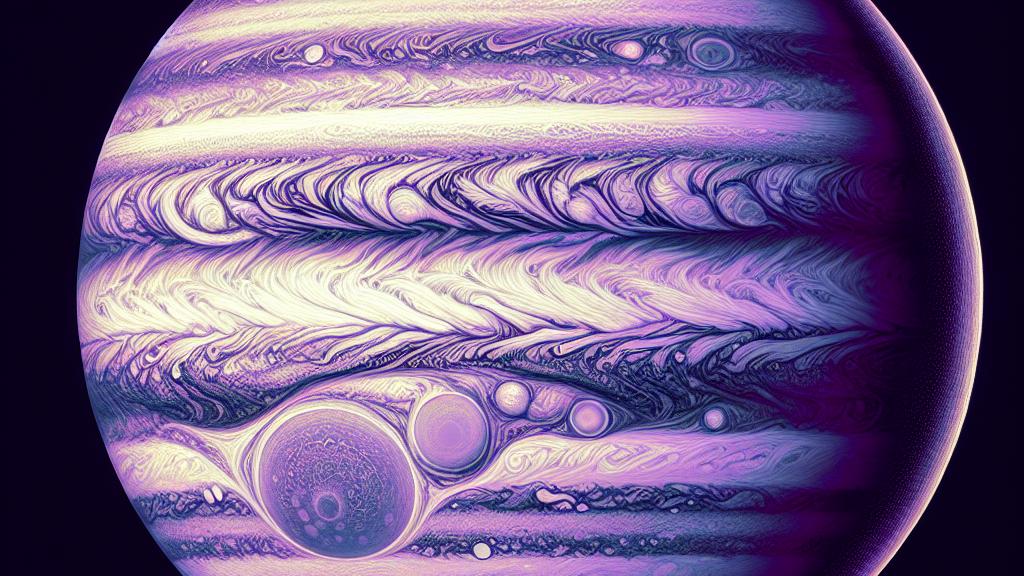NASA's Hubble Space Telescope Shows Jupiter in Amazing Ultraviolet Colors
Overview
- Hubble's stunning ultraviolet image of Jupiter reveals exciting details.
- The captivating view highlights both the Great Red Spot and unique polar hazes.
- Such images redefine our understanding of Jupiter's complex atmospheric dynamics.

Unveiling Jupiter's Secrets
On January 17, 2025, NASA captured the imagination of astronomy enthusiasts worldwide by unveiling a breathtaking ultraviolet image of Jupiter, all thanks to the remarkable Hubble Space Telescope. This captivating snapshot, released to mark Jupiter reaching opposition—an event when the planet is perfectly aligned opposite the Sun—beautifully showcases its most iconic feature: the Great Red Spot. While our eyes perceive this colossal storm as a brilliant red whirlpool, when viewed through ultraviolet wavelengths, it surprisingly appears much darker. This phenomenon occurs because high-altitude haze particles absorb certain light. By exploring Jupiter's atmosphere through this innovative lens, we gain unprecedented insights into the planet's turbulent weather and mesmerizing dynamics.
The Science Behind the Colors
The magic of this ultraviolet image lies in its ability to illuminate Jupiter's polar regions, which are adorned with vibrant reddish, wavy hazes. These dazzling features do not simply reflect light; they interact dynamically with it, exhibiting distinct colors and patterns based on their size, composition, and altitude. It’s as if Jupiter is wearing an intricate, cosmic costume, each hue narrating a different tale about its tempestuous weather systems. For middle school students, this imagery is not only thrilling but also serves as an engaging entry point into understanding how scientists utilize powerful instruments like the Hubble to unveil the solar system's secrets. It's akin to peering through a magical window, discovering incredible details that are normally concealed from our sight—this image encapsulates that wondrous experience perfectly!
Why This Matters
The ultraviolet image of Jupiter represents far more than just stunning visuals; it plays a pivotal role in enhancing our comprehension of planetary atmospheres. As scientists carefully analyze the way ultraviolet light interacts with the gas giant’s volatile storms and cloud formations, they unlock valuable lessons that can apply to understanding Earth's own atmospheric phenomena. For instance, studying the driving forces behind Jupiter's chaotic weather can lead to more accurate predictions about climate changes and weather patterns here on our home planet. This connection reinforces the idea that our solar system is a laboratory in itself, where insights from distant worlds enrich our understanding of the closest one. Ultimately, the revelations gleaned from Hubble spark curiosity and invite dialogue among everyone, from budding scientists to seasoned researchers, reminding us that exploration knows no bounds.

Loading...